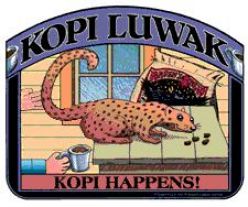 In a previous role I was lucky enough to manage an Internal Comms video channel aimed at our field sales force. The channel’s aim was to deliver short video messages that were business-aligned, relevant, timely and targeted. Topics covered in these videocasts included sales updates, product launches, new marketing initiatives and company meetings.
In a previous role I was lucky enough to manage an Internal Comms video channel aimed at our field sales force. The channel’s aim was to deliver short video messages that were business-aligned, relevant, timely and targeted. Topics covered in these videocasts included sales updates, product launches, new marketing initiatives and company meetings.
I’d like to share our best practice findings with you. These are all based on practical first-hand experience and I believe, are relevant for any IC video channel, either as push, pull, streamed, video podcast or download. If you have any other tips or correction/qualifiers here, please let me know – I’ve jotted these down as pointers and I’m more than sure that there’s a lot I’ve missed out here! Enjoy…
12 Tips for Internal Comms Video
- Before you do anything, decide on the aims and objectives. Ask how the video channel will support your overall comms strategy and as a result the overall business strategy.
- Back up the aims and objectives with strong and agreed governance. Get senior buy-in to support it and make sure your stakeholders agree with it. Publish the governance.
This will ensure the channel maintains focus and does not get used for off-piste aims such as self-promotional egocasts, superficial ends or irrelevant content.
And remember – the more successful, the more you will need that governance! - Content is king. An informative, entertaining and interesting video from someone with a web cam, will always beat boring studio-quality crap sub-optimum content. Even though content matters most, that’s still no excuse for not doing your best. Produce to the highest quality you can, with the time and money available. Always avoid basic Nobo mistakes such as presenters in patterned shirts and ties, clutter in the background, noisy interference or filming in front of a window.
- Don’t use video for the sake of it. Always ask ‘why use video?‘ and whether your aim will be be met with other formats. This can save time, money and ensure that the video channel maintains quality plus it keeps to the stated aims.
- Make all content relevant. No one will click on a video and watch it unless there’s something important in it that they will gain from. It doesn’t matter how well it’s filmed, scripted or delivered, if it hasn’t got relevant content it won’t get watched. Always put your audience needs first.
- The close cousin of relevancy is the target audience. When you tell people the video is available, use targeted messaging or pull technology such as RSS. Don’t spam. Even if you think the content is great and relevant to everyone they might not agree. The more that you spam them, the more likely they are to avoid your video in future. I’ll say it again, always put your audience needs first.
- It may be fahionable to be late but your audience wants punctuality. Decide on the frequency and make sure content is up to date. Don’t send out too many videos – your audience are at work and haven’t got the time. Decide on a max frequency for sending videos out and stick to it. If you must have lots of videos, consider storing them in a YouTube type site and send out a regular compendium update.
Don’t be late – if it’s time-sensitive info and going to take 3 weeks to make and send the video out, the chances are that it’s going to be out of date by the time your audience see it. Bearing in mind that you might just might miss a deadline, avoid the presenter mentioning dates whenever you can and never ever have them saying ‘next Tuesday’. The chances are it will be watched by X% on the Wednesday after. - Make it short. All the evidence says that online attention span is short, especially for video.If people get bored they will switch off. We found that 3 minutes was best with 4 minutes the max for sales-update video messages. If you’ve a longer event say a video of a company meeting, break it up into bite-sized chunks.
nb This does not apply to training videos for Systems Engineers who will happily watch one of their colleagues talking about something technical for an hour or more. - Script it/structure it. Even if the video is informal and very short, have a script if at all possible. A speaker may be very good delivering live ad hoc talks, but that isn’t necessarily going to work on an online video. Also, some presenters are more interested in themselves than either the content or their audience. Scripts will keep both the presenter and your video relevant and focused on your stated aims and objectives.
- Make it easy – make it linky. If you’ve done a good job and sent a timely, interesting and relevant message to your audience, they will want more. They will either want to learn more, or to do something with the info you’ve given them. Add tangible pointers to next steps – links to sites, documents and to you. Always provide easy feedback links!
- Measure it. See how many people watched the video. Ask people what they thought of the channel overall and for each video message. Ask them via feedback rating stars, online polls or simply by asking them. Look at what works and what doesn’t. Look at what your audience decides to watch rather than what you send them.
Compare all data with the overall aims. Don’t do this once, but look at what’s been achieved on a regular basis. - Use your data and audience feedback to experiment and improve the channel. Keep it fresh and don’t rest on your laurels. Try new approaches and ways of delivering it. But whatever you do, always make sure the camera is on and is recording. Believe me, I’ve seen it happen and senior vice presidents do not think it’s funny!



